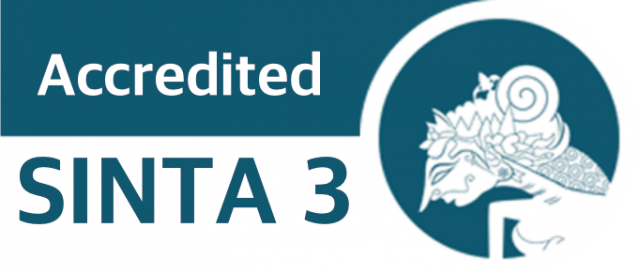Konstruksi Sosial atas Kesempatan Kerja: Studi Kasus Peran Dinas Tenaga Kerja di Kabupaten Asahan
Social Construction of Employment Opportunities: A Case Study of the Role of the Manpower Office in Asahan Regency
DOI:
https://doi.org/10.24114/antro.v10i2.68841Keywords:
Konstruksi sosial, Kesempatan kerja, Dinas Tenaga Kerja, Pengangguran struktural, Kabupaten AsahanAbstract
The unemployment rate in Asahan Regency, North Sumatra, remains above the national average despite a numerical downward trend. This study analyzes the role of the Asahan Regency Manpower Office in expanding employment opportunities, focusing on the social construction of labor policy. Data were collected through in-depth interviews, participatory observations, and a review of policy documents and BPS statistics. The findings reveal that although the Manpower Office has implemented job placement programs, competency training, and the Employment Information System (SIKAS), its effectiveness is hindered by three main factors: (1) a mismatch between training programs and industry needs, (2) limited dissemination of the SIKAS digital platform (only 30% of the workforce is aware of it), and (3) budget constraints (Rp120–150 million per year) and limited human resources (only 30% of employees meet functional criteria). Key findings indicate that while 86.4% of training participants (2022) obtained certification, only 49.7% were absorbed into the labor market, with the majority being unemployed individuals with high school (28.3%) and elementary school (31.5%) education. This disparity reflects a failure in bridging the skills mismatch. Meanwhile, job placements increased from 410 (2020) to 963 (2022), but this growth was reactive to global market demands rather than the result of systematic planning. In terms of communication, minimal collaboration with local media has led to information gaps, preventing outreach to vulnerable groups. This study recommends a policy reorientation by aligning training curricula with industry demands, intensifying SIKAS dissemination through community collaboration, and strengthening the institutional capacity.References
Adlini, M. N., Dinda, A. H., Yulinda Sarah, Chotimah.C., Merliyana, S. J. 2022. Metode Penelitian Kualitatif Studi Pustaka. Edumaspul. Vol 6 no 01, 974–980.
Badan Pusat Statistik. 2023. Kabupaten Asahan Dalam Angka 2023. Badan Pusat Statistik Kabupaten Asahan, Asahan.
Firnawati, Muhammadiah, & Mone, A. 2016. Peran Pemerintah Dalam Penanggulangan Pengangguran Di Kota Makasar, Jurnal Administrasi Publik Vol 2 no 03
Halim, Muhammad Imran Rosyadi. 2023. Evaluasi Program Bursa Kerja (Job Fair) Dalam Penanggulangan Pengangguran Oleh Dinas Tenaga Kerja Kota Ternate Maluku Utara 2023. Eprints.ipdn
Juliandi, Azuar. 2015. Metodologi Penelitian Bisnis. Medan: UMSU Press.
Nasution, L. N .2021. Pertumbuhan Ekonomi & Tingkat Kemiskinan. Medan : Unpri Press ISBN. Tersedia pada https://jurnal.unprimdn.ac.id/index.php/ISBN/article/view/2409 (Diakses Pada 09 Mei 2024)
Ponamon Sabrina, Lengkong Florence D,J, Palar Novie. 2021. Implementasi Program Pelatihan Tenaga Kerja (Studi Di Dinas Tenaga Kerja Dan Transmigrasi Provinsi Sulawesi Utara), Jurnal Administrasi Publik Vol 7 no 104
Rangkuti, Rudi Alfahri., Nadhirah Ida. 2023. Optimalisasi Peran Mediator Dalam Penyelesaian Perselisihan Hubungan Industrial Di Dinas Tenaga Kerja Provinsi Sumatera Utara. Journal of Education, Humaniora and Social Sciences (JEHSS). Vol 5 no 03
Sembiring, F .2020. Analisis Pengaruh Pertumbuhan Ekonomi , IPM , Pengangguran Terbuka dan Angkatan Kerja Terhadap Kemiskinan di Sumatera Utara. Serambi Engineering Vol V, no 2
Suhandi, Wiguna Wahyu, Quraysin Icin. 2021. Dinamika Permasalahan Ketenagakerjaan Dan Pengangguran Di Indonesia. Jurnal Ilmiah Ilmu Manajemen dan Kewirausahaan Vol 1, no 1
Suhardono, Edy. 2018. Teori Peran Konsep, Derivasi dan Implikasinya. Jakarta: PT Gramedia Pustaka Utama
Suharto, Edi. 2017. Membangun Masyarakat Memberdayakan Rakyat. Bandung : Refika Aditama
Waruwu, M. 2023. Pendekatan Penelitian Pendidikan : Metode Penelitian Kualitatif , Metode Penelitian Kuantitatif dan Metode Penelitian Kombinasi ( Mixed Method ). Jurnal Pendidikan Tambusai .Vol 7 no 01 , 2896–2910.
Downloads
Published
How to Cite
Issue
Section
License

This work is licensed under a Creative Commons Attribution 4.0 International License.

This work is licensed under a Creative Commons Attribution 4.0 International License
Authors who publish with this journal agree to the following terms:
- Authors retain copyright and grant the journal right of first publication with the work simultaneously licensed under Creative Commons Attribution 4.0 International License that allows others to share the work with an acknowledgement of the work's authorship and initial publication in this journal.
- Authors are able to enter into separate, additional contractual arrangements for the non-exclusive distribution of the journal's published version of the work (e.g., post it to an institutional repository or publish it in a book), with an acknowledgement of its initial publication in this journal.Penulis.
- Authors are permitted and encouraged to post their work online (e.g., in institutional repositories or on their website) prior to and during the submission process, as it can lead to productive exchanges, as well as earlier and greater citation of published work (Refer to The Effect of Open Access).


